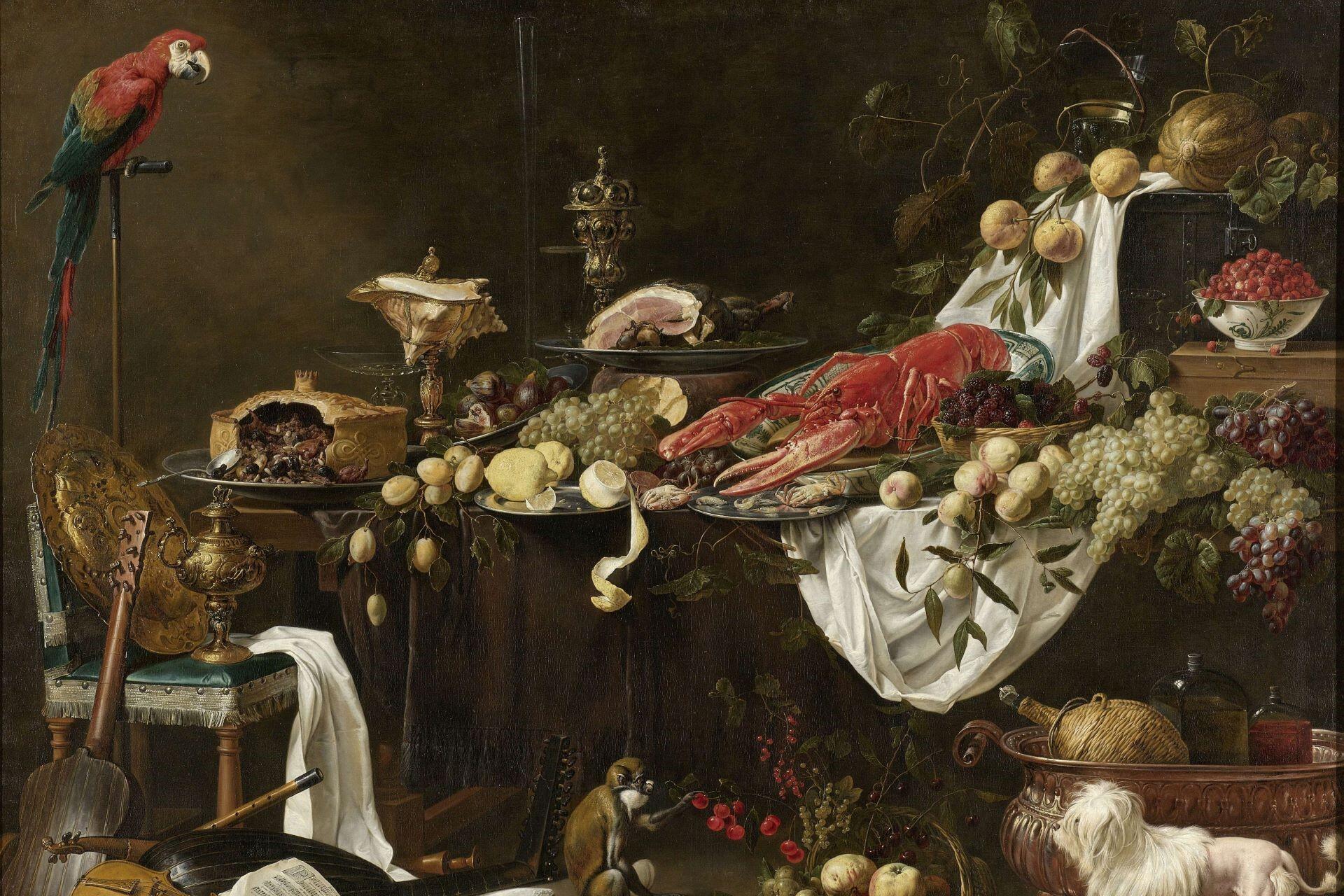Still-life art has been a popular style for centuries, with artists transforming everyday objects into timeless reflections of culture, beauty, and symbolism. From the fruit bowls of the 17th century to the conceptual canvases of the end of the millennium, this genre spans media such as oil and acrylic, as well as across eras and artistic styles. Here, we'll explore some of the most famous still-life paintings and the renowned still-life artists who created them, examining the shifts in artistic technique and philosophy and demonstrating how still lifes remain relevant examples of creative expression.
| Artist | Famous Work | Medium | Century | Known For |
|---|---|---|---|---|
| Michelangelo Caravaggio | Basket of Fruit | Oil on canvas | 16th | Baroque realism, chiaroscuro, symbolic fruit and vanitas |
| Claude Monet | Bassin Aux Nymphéas | Oil on canvas | 20th | Impressionist studies of light, repetition, and perception |
| Paul Cézanne | The Basket of Apples | Oil on canvas | 19th | Geometric abstraction, proto-Cubism, warped perspectives |
| Salvador Dalí | Living Still Life | Oil on canvas | 20th | Surreal motion, floating objects, “Nuclear Mysticism” |
| Andy Warhol | 32 Campbell’s Soup Cans | Synthetic polymer on canvas | 20th | Pop Art, mass production, redefining everyday commercial art |

Why Still Life Remains a Powerful Art Form
So what makes still life so important? For one, it's more than a simple depiction of everyday objects. A still life often explores form, light, symbolism, and even the passage of time.
Some of the first still lifes date back to Ancient Egyptian tombs, but remained popular in Dutch and French painting traditions for millennia, an enduring testament to how artists can shape meaning in seemingly mundane objects.
Still-life paintings are compelling because of how they blend intimacy and universality, taking everyday objects like fruit, flowers, or a table and making a commentary on beauty, mortality, or domestic life. Artists across the centuries have even used still lifes to reflect on the concept of vanitas, the reminder that life is fragile and full of fleeting pleasures.
Vanitas is a subgenre of still life art that was popular in 16th- and 17th-century Dutch painting. These works feature symbols such as skulls, rotting fruit, clocks, or extinguished candles, intended to remind viewers of life’s transience, the certainty of death, and the futility of material pursuits.
Still-life is a genre that encourages both the artist and the observer to slow down, notice details, and appreciate how light plays on the surface. It can be achieved through the soft precision of oil or vibrant strokes of acrylic. Still, either way, the controlled environment is where the artist can experiment with techniques such as composition, brushwork, shadow, and colour harmony.
There are several drawing fundamentals for still life that every artist needs to get started, providing a perfect foundation for beginners to create from observation and strengthen their technical skills.
Caravaggio’s Basket of Fruit: A Baroque Masterpiece
Caravaggio's Basket of Fruit is one of the still-life paintings that combines hyper-realism and symbolic depth.
This piece was painted around 1599, and although Caravaggio is primarily known for his intense religious works, this is a modern composition that stands out against his body of work.
While most of Caravaggio’s work focused on dramatic religious scenes, Basket of Fruit was groundbreaking for featuring no human figures at all, just a basket and natural elements. This subtle but bold choice helped legitimise still life as a standalone genre in fine art.
At first, you'll see that the painting appears to be a simple woven basket overflowing with ripened fruits like figs, apples, grapes, and quinces. Set against a plain background, its brilliance comes to the fore in Caravaggio's execution.
You see, Caravaggio mastered chiaroscuro, the dramatic use of light and dark and an illusionistic trompe l'oeil, which makes the objects seem to emerge from the canvas.
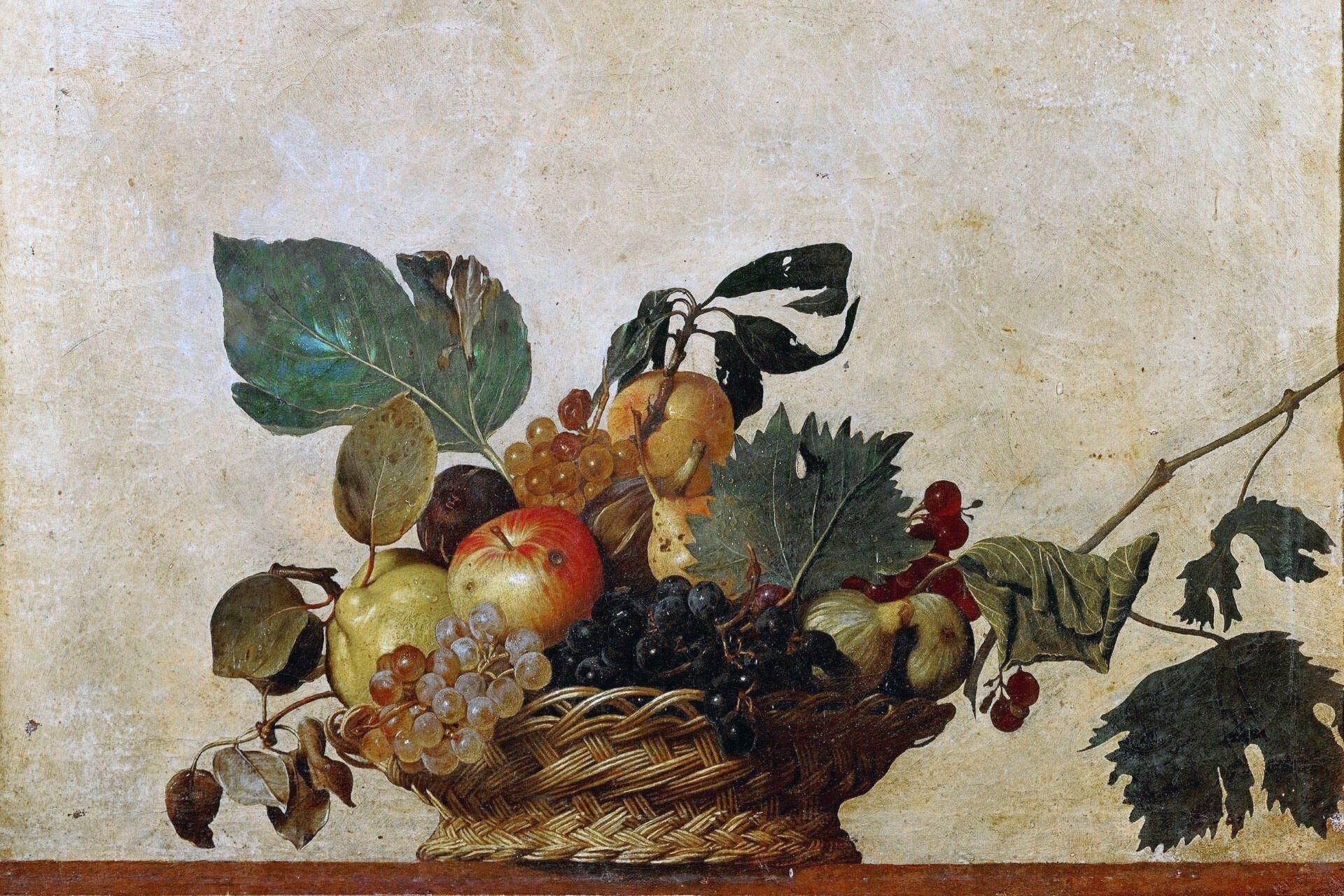
You can see the meticulous care taken for every object in the basket. The rotting leaves and bruised skins are a nod to the vanitas tradition we mentioned before. Through this, Caravaggio transforms a tabletop arrangement into a profound philosophical meditation on mortality and decay.
This oil painting helped launch the Roman still life movement, influencing generations of painters throughout the history of still life, including Dutch and Flemish artists such as Pieter Claesz. Caravaggio never visited the Netherlands, but his paintings had a profound impact on Dutch painters.
Claude Monet’s Water Lilies and the Art of Light
Claude Monet isn't the first artist that comes to mind when discussing still-life artists. However, his legendary Water Lilies series explores natural objects, such as floating blossoms, reflections, and shifting light.
His most well-known painting in the series is Bassin Aux Nymphéas (Water Lily Pond), which was painted in 1919. This oil on canvas, spanning three metres in width, showcases Monet's dedication to capturing light, atmosphere, and the impermanence of nature.
While not a traditional still life on a table, this study in how stillness, repetition, and the seasons can affect perception is a reimaging of still life through the eyes of an impressionist.
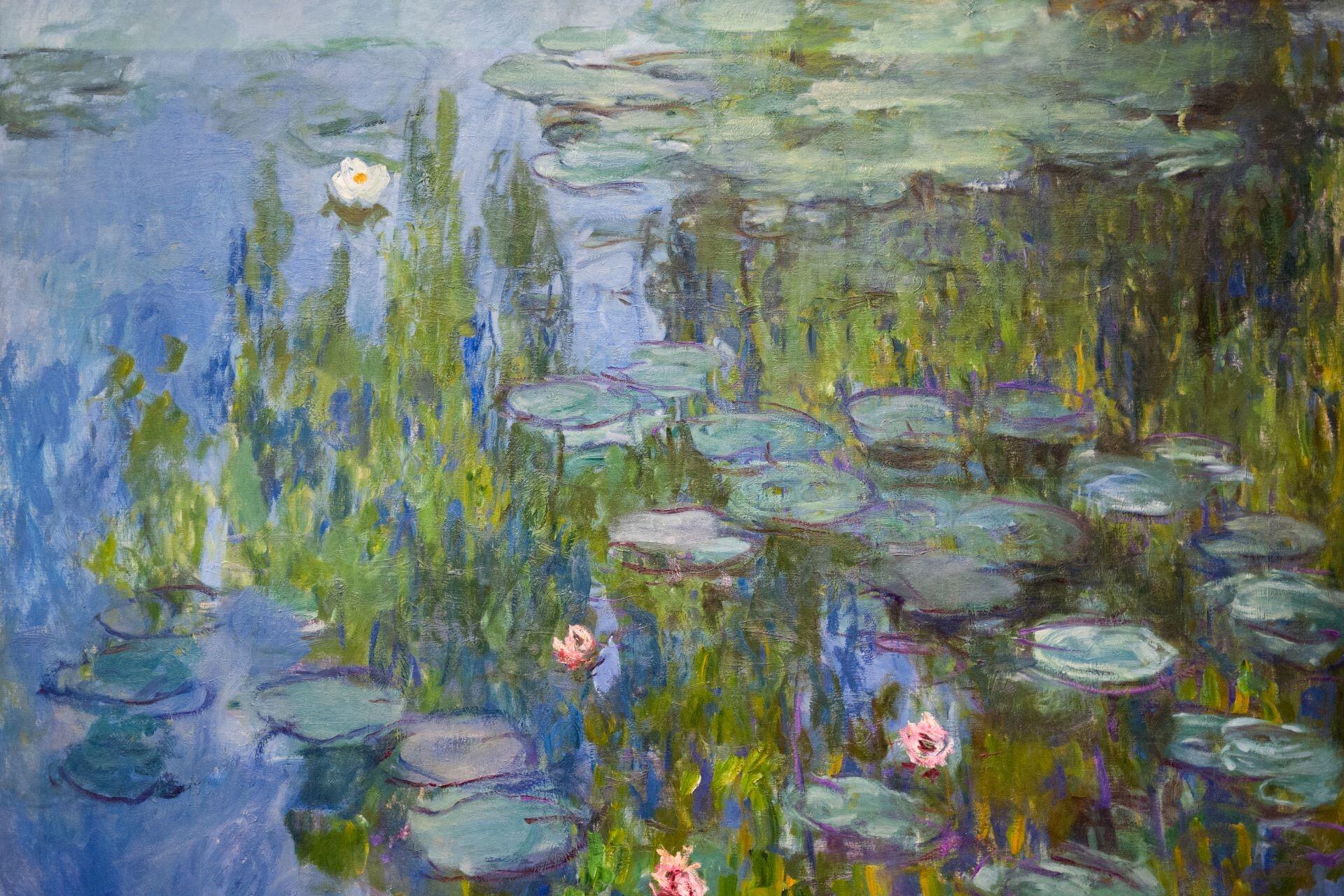
Monet's Water Lilies series comprised more than 250 works, with the same subjects revisited at different times of day and in various weather conditions. It turned his garden in Giverny into a living gallery.
Claude Monet spent over 30 years painting the lily pond in his garden at Giverny. He often completed multiple canvases at once to capture different lighting conditions, some early in the morning, others at sunset. The pond became both a real and symbolic mirror of nature’s impermanence.
In 2008, Bassin aux Nymphéas was sold for over $80 million, making it one of the most expensive European paintings ever auctioned and earning its place among the most famous still-life paintings in history.

Paul Cézanne’s Painted Geometry and Everyday Objects
You can't talk about still-life art without mentioning Paul Cézanne. The "father of modern painting", as he was known, bridged the world of Impressionism and early abstraction.
His signature piece, The Basket of Apples, showcases the artist's obsession with form, balance, and perspective. This iconic oil painting includes a tilted wine bottle, a white cloth, and a group of apples on a slightly unstable table.
Unlike other still-life painters, Cézanne wasn't aiming for photographic realism but instead purposefully distorted the proportions and perspective, exploring how we see and interpret space with soft shadows, broken lines, and organic yet calculated results.
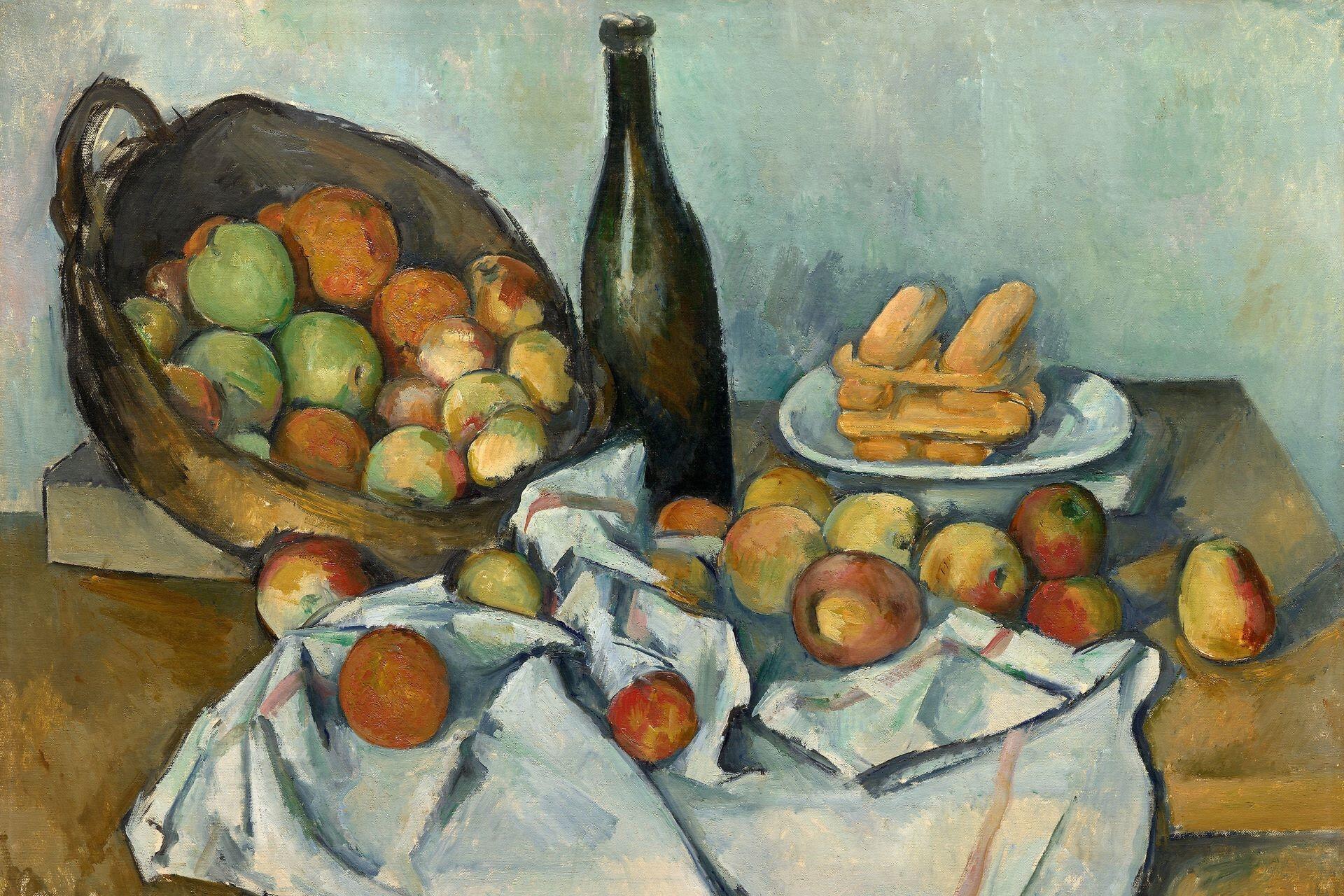
Viewers are invited to see still lifes as more than decorative paintings; explorations of perception and structure. Céanne wasn't that bothered by symbolism or the vanitas motifs here. Instead, he focused on form, colour, and how they interact over time.
Surreal Still Life: Salvador Dalí’s Living Canvas
Traditional still-life paintings often emphasise order, structure, and the quiet beauty of everyday objects. Salvador Dalí, like with many other things, had different ideas. His 1956 work, Nature Morte Vivante or "Living Still Life", reimagines still life by twisting it into the realm of fantasy.
Dalí painted this during his "Nuclear Mysticism" period, combining classical techniques with scientific theories about atomic structure and spirituality. The fruits, bottles, and dishes aren't resting passively on a table. They're instead floating, twisting, and tumbling midair, breaking free from gravity and the traditional form of still lifes. The scene blends motion, light, and metaphor, with each object imbued with a hidden meaning.
The result is a surreal piece that retains the composition and symbolism of other still lifes. It borrows from vanitas traditions while delivering it in a contemporary visual language, almost cinematic. With bold colours and meticulous details, this canvas invites viewers to question everything, making Dalí's work the vehicle that takes the genre beyond its classical constraints. The piece is currently in the Salvador Dalí Museum in St. Petersburg, Florida.
Andy Warhol and the Rise of Contemporary Still Life
In 1962, Andy Warhol revolutionised still life. His iconic 32 Campbell's Soup Cans took everyday objects, the aforementioned mass-produced soup cans, and drove them into the heart of fine art.
These works weren't about imitating life or exploring vanitas themes; they were here to challenge the role of the artist and originality, holding a mirror up to the concept of art as a commercial product, much like the humble can of soup.
Avoiding the painterly style of the Old Masters, Warhol's soup cans were flat, uniform, and intentionally repetitive. They were printed using polymer paint and silkscreen techniques, using modern industrial processes rather than brushwork. This simplicity made these paintings some of the most famous still-life paintings of the modern age.
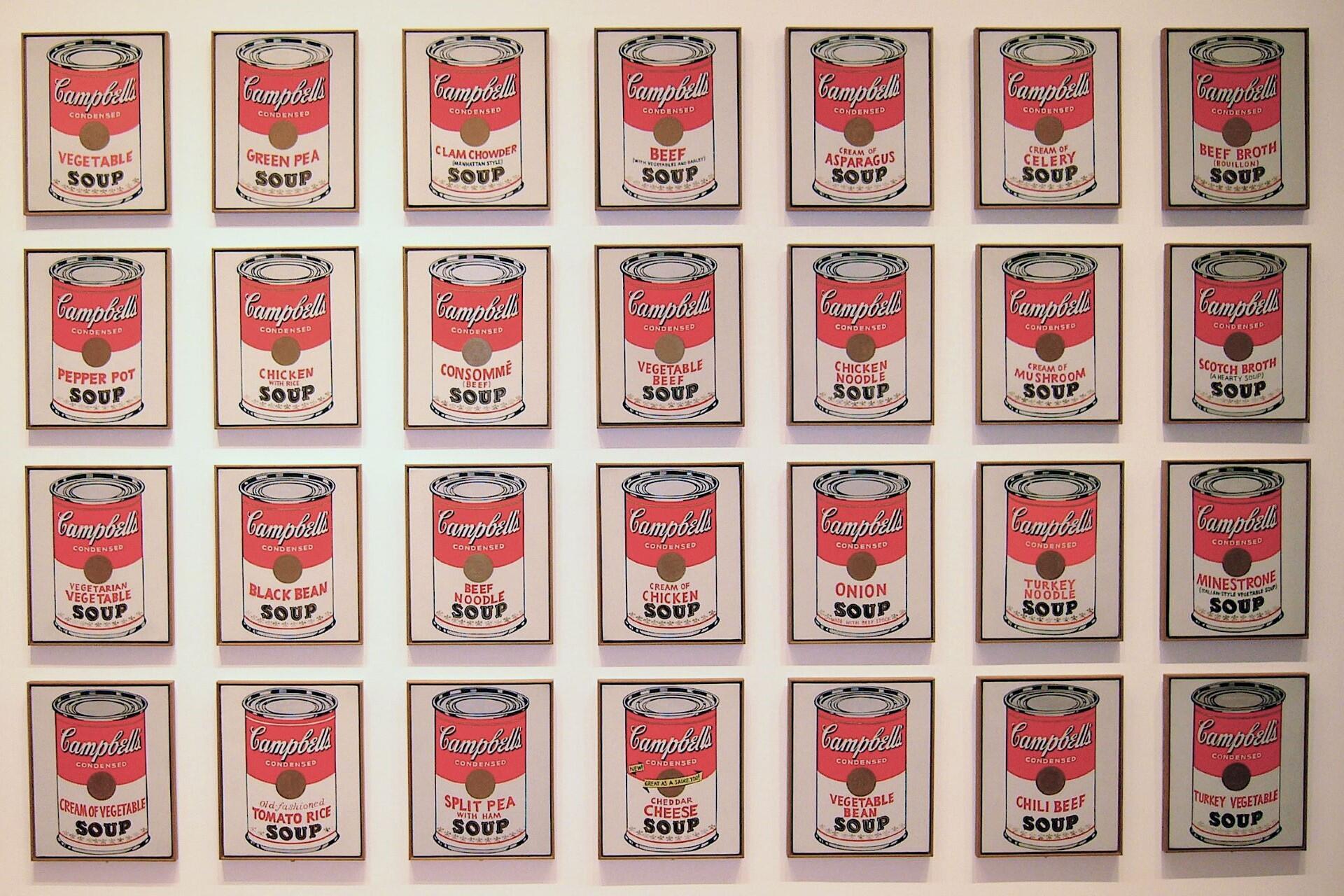
Warhol managed to present food while emptying its traditional symbolism. He blurred the line between fine art and advertising, repositioning the humble still life as a commentary on American consumer culture.
The canvas challenged the form of art itself and helped create the idea of modern still life.
Learn to Paint Still Life with Personalised Tutoring
Those new to still life painting or seasoned artists refining their techniques can benefit from working with a personal tutor. While still life is a foundational genre that can sharpen your observational skills, teach composition, and deepen your understanding of form, light, and colour, it's also challenging to master.
Improve your still life with composition.
Your tutor can help you create structured learning goals tailored to your level, from setting up your first still-life composition to more complex techniques like chiaroscuro, layering, and colour mixing.
One-on-one learning is especially effective when dealing with technical challenges or exploring your own personal style. Your tutor can offer immediate feedback and help you build up a portfolio of still-life artworks.
Just search for art tutors on Superprof, and you can start browsing their profiles, see what they offer, compare prices, and read reviews from their other students. With most offering the first session for free, you can even try a few before choosing the right one for you, just like with still-life compositions!

